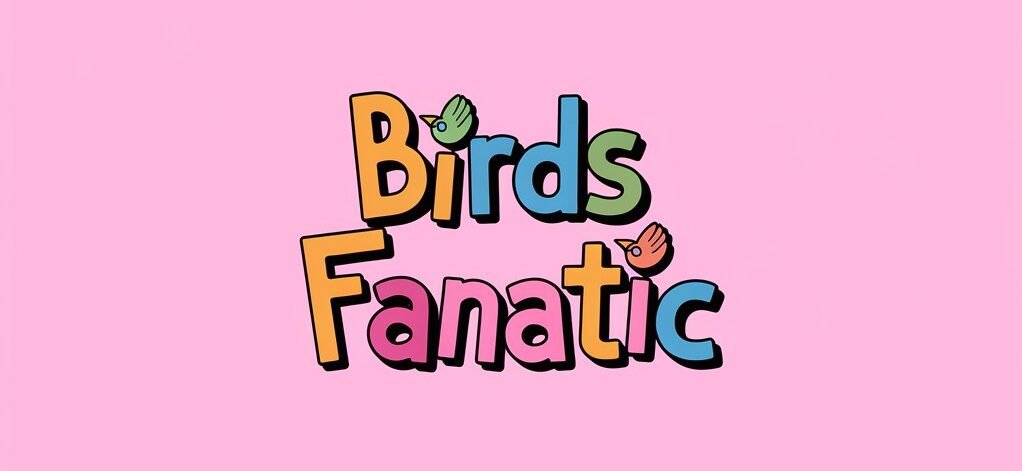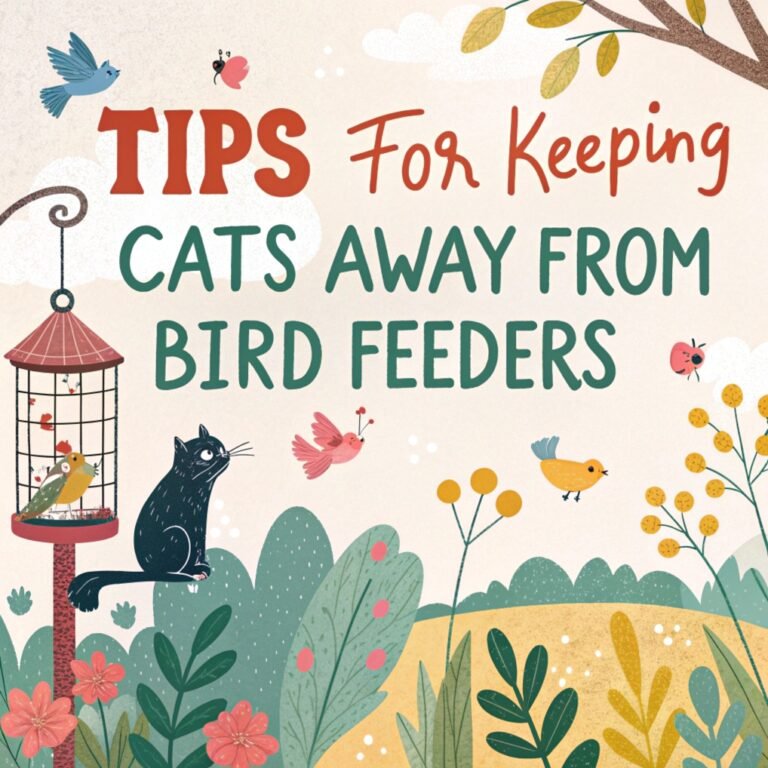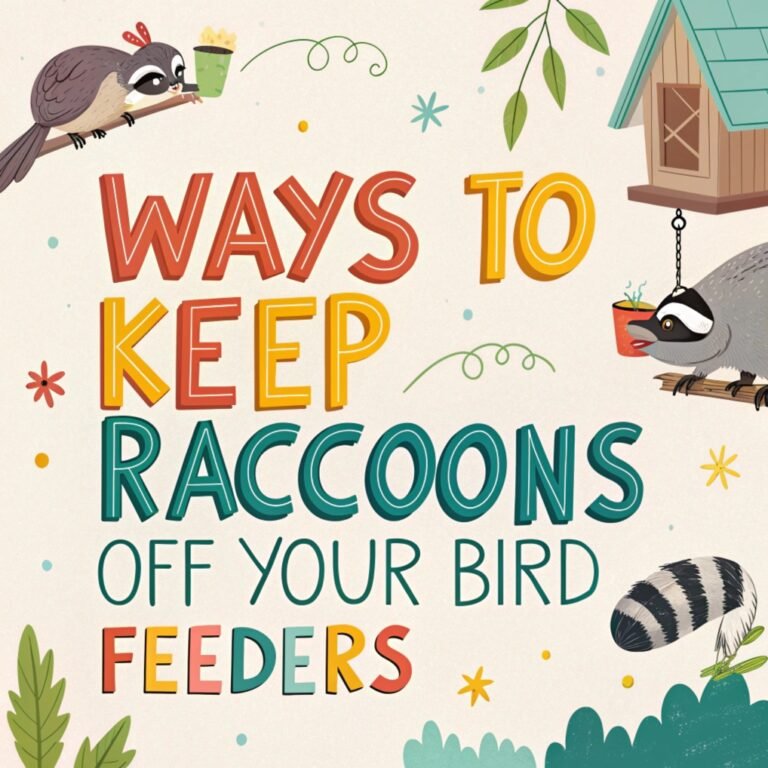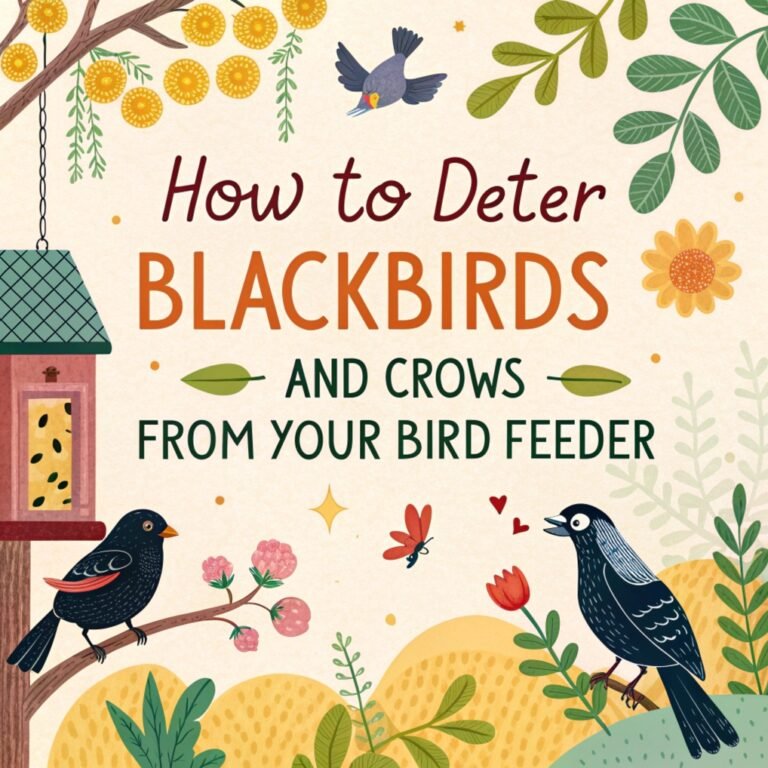Aluminum Foil and Squirrel Deterrence: An Effective Solution for Protecting Bird Feeders?
Bird enthusiasts often face a common challenge: squirrels raiding their feeders.
These clever creatures can outsmart many deterrent systems, leading to frustrated bird watchers and depleted seed supplies.
Among the various solutions proposed, a surprisingly simple one has gained attention: aluminum foil.
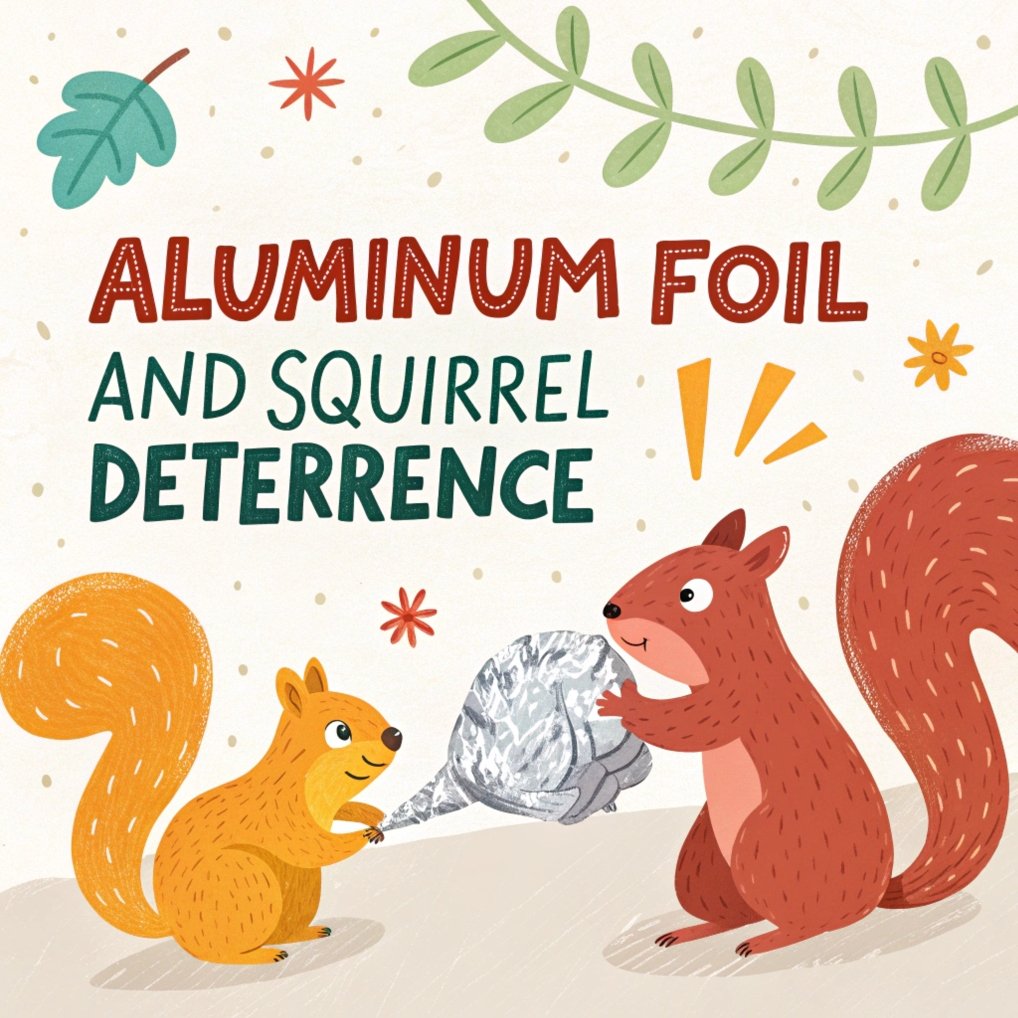
Key Takeaways
- Aluminum foil can be an effective squirrel deterrent due to its reflective properties, unfamiliar texture, and noise-making qualities.
- The effectiveness of foil lies in its ability to create visual disturbances, produce startling sounds, and provide a physical barrier that squirrels find challenging to navigate.
- Many bird enthusiasts have reported success using aluminum foil to protect their feeders, particularly when wrapping feeder poles or creating reflective surfaces near feeding areas.
- Compared to other deterrent methods, aluminum foil is inexpensive, easily replaceable, and environmentally friendly.
- For maximum effectiveness, foil should be properly implemented, regularly maintained, and often combined with other deterrent strategies.
- While generally effective, aluminum foil may have some drawbacks, including aesthetic concerns and the need for frequent replacement in some cases.
- Creative applications of foil, such as reflective mobiles or wind chimes, can enhance its deterrent effect while adding decorative elements to your garden.
- Combining aluminum foil with other strategies, like squirrel-proof seed blends or motion-activated deterrents, can create a more robust defense against persistent squirrels.
- Regular maintenance and adaptation of your foil deterrent system is crucial for long-term success.
- Understanding squirrel feeding habits and seasonal patterns can help in optimizing your deterrent strategy.
- It’s important to consider ethical approaches to wildlife management and strive for coexistence between birds and squirrels in your backyard ecosystem.
- While effective, aluminum foil works best as part of a comprehensive approach to squirrel deterrence, combined with other methods and regular adjustments.
The Persistent Problem of Squirrels at Bird Feeders
Squirrels are notorious for their ability to raid bird feeders, often outsmarting even the most elaborate deterrent systems.
These agile creatures can jump impressive distances, climb smooth surfaces, and squeeze through small openings to reach their desired food source.
For bird enthusiasts and backyard wildlife observers, this presents a constant challenge. Squirrels not only consume large quantities of bird seed but can also damage feeders and scare away the very birds that were intended to be fed.
This ongoing battle between humans and squirrels has led to the development of various strategies to protect bird feeders, with aluminum foil emerging as a surprisingly simple yet potentially effective solution.
The search for an ideal squirrel deterrent has been a long-standing quest for many, leading to the exploration of numerous methods, from specialized feeders to repellents.
Among these, aluminum foil has gained attention for its accessibility, low cost, and reported effectiveness.
As we delve deeper into this topic, we’ll examine the science behind using aluminum foil as a squirrel deterrent, explore real-world experiences, and consider its pros and cons compared to other methods.
The Science Behind Aluminum Foil as a Squirrel Deterrent

The effectiveness of aluminum foil as a squirrel deterrent is rooted in several key factors that exploit squirrels’ natural behaviors and sensitivities. Reflective properties of aluminum foil play a significant role in its deterrent capabilities.
The shiny surface creates visual disturbances that can confuse and disorient squirrels, making them hesitant to approach. This effect is particularly pronounced in bright sunlight, where the reflections can be especially intense and off-putting to these creatures.
Additionally, the texture and sound of aluminum foil contribute to its effectiveness. When squirrels come into contact with the foil, the crinkly noise it produces can startle them.
This unexpected auditory stimulus often triggers their natural flight response, causing them to retreat from the area.
The unfamiliar texture under their paws also creates an uncomfortable sensation, further discouraging their attempts to access the feeder.
Moreover, aluminum foil presents a physical barrier that squirrels find challenging to navigate. Its slippery surface makes it difficult for them to gain a secure foothold, especially when wrapped around poles or other structures leading to bird feeders.
This combination of visual, auditory, and tactile deterrents makes aluminum foil a multi-faceted approach to squirrel prevention.
Real-World Experiences with Aluminum Foil Deterrents
Many backyard bird enthusiasts have reported success using aluminum foil to deter squirrels from their feeders. One common method involves wrapping foil around the pole supporting the bird feeder.
William Stevenson from Huntsville, AL, shared his experience of covering the tops of potted plants with a layer of aluminum foil to prevent squirrels from digging.
He noted that this simple solution effectively stopped the problem, speculating that either the shiny surface or the crinkly sound kept the squirrels at bay.
Another approach involves creating reflective surfaces near the feeder. Some bird lovers have hung strips of aluminum foil or used foil pans around their feeding areas.
These reflective elements create an environment that squirrels find unsettling, often deterring them from approaching.
The added benefit of this method is that it can also help reflect more light onto the plants, which can be particularly useful in areas with limited sunlight.
However, it’s important to note that experiences can vary. While many have found success with aluminum foil, others report that determined squirrels may eventually overcome their initial hesitation.
This suggests that while aluminum foil can be an effective deterrent, it may work best as part of a broader strategy to protect bird feeders from these persistent creatures.
Comparing Aluminum Foil to Other Squirrel Deterrent Methods

When evaluating the effectiveness of aluminum foil as a squirrel deterrent, it’s crucial to compare it to other popular methods.
Specialized squirrel-proof feeders are a common alternative, designed with weight-activated mechanisms that close access to food when a heavier animal (like a squirrel) attempts to feed.
While these can be highly effective, they are often more expensive than simple aluminum foil solutions and may limit the types of birds that can access the feeder.
Baffles are another widely used deterrent. These dome-shaped devices are installed above or below feeders to prevent squirrels from climbing or jumping onto them.
Baffles can be very effective but may require precise placement and can be more visually obtrusive than aluminum foil.
Some creative solutions, like using a Slinky on feeder poles, work on a similar principle to baffles but with a more whimsical approach.
Spicy additives to bird seed, such as cayenne pepper, are sometimes used to deter squirrels while not affecting birds. However, this method requires regular reapplication and may raise ethical concerns about causing discomfort to wildlife.
In comparison, aluminum foil offers a non-toxic, easily replaceable, and environmentally friendly option that doesn’t risk harm to animals.
Implementing Aluminum Foil Deterrents Effectively
To maximize the effectiveness of aluminum foil as a squirrel deterrent, proper implementation is key. When wrapping feeder poles, ensure the foil extends at least 4-5 feet up the pole and is tightly secured.
This prevents squirrels from simply climbing around the foil barrier. For hanging feeders, consider creating a foil skirt or baffle that extends outward, making it difficult for squirrels to reach around.
Regularly replacing or repositioning the foil can help maintain its effectiveness. Squirrels are adaptable creatures, and they may become accustomed to static deterrents over time.
By changing the appearance or position of the foil periodically, you can keep them guessing and maintain the deterrent effect.
Combining aluminum foil with other methods can create a more robust defense. For instance, using foil in conjunction with strategic feeder placement – following the 5-7-9 rule (placing feeders at least 5 feet high, 7 feet away from jumping points, and 9 feet below overhanging branches) – can significantly enhance your squirrel-proofing efforts.
Potential Drawbacks and Considerations
While aluminum foil can be an effective squirrel deterrent, it’s important to consider potential drawbacks.
One concern is the aesthetic impact on your garden or backyard. The reflective nature of foil, while useful for deterring squirrels, may not blend well with natural surroundings.
This could be a significant factor for those who prioritize the visual appeal of their outdoor spaces.
There are also environmental considerations to keep in mind. Although aluminum foil is recyclable, frequent replacement could lead to increased waste. Additionally, in windy conditions, loose pieces of foil could become litter if not securely fastened.
It’s crucial to ensure that any foil used is well-secured and regularly maintained to prevent these issues.
Some bird enthusiasts worry about the potential impact on birds themselves. While there’s no evidence to suggest that aluminum foil harms birds, its reflective properties might initially deter some more timid species.
However, most birds typically adapt quickly to the presence of foil, especially when food is available.
Creative Applications of Aluminum Foil in Bird Feeding Areas
Beyond simply wrapping feeder poles, there are several creative ways to incorporate aluminum foil into your bird feeding setup. One innovative approach is to create reflective mobiles or wind chimes using strips of foil.
These can be hung near feeders, providing both visual and auditory deterrents to squirrels while adding a decorative element to your garden.
Another technique involves using foil to create temporary barriers around new plantings or bulbs. This can protect your garden from squirrel digging while also safeguarding nearby bird feeding areas.
Some gardeners have found success in laying strips of foil directly on the ground around feeder areas, creating an uncomfortable surface for squirrels to traverse.
For those with multiple feeding stations, consider using foil to create pathways or corridors that are squirrel-resistant but bird-friendly.
This can involve strategically placing reflective surfaces to guide birds to safe feeding areas while dissuading squirrels from the same routes.
Combining Aluminum Foil with Other Squirrel Deterrent Strategies
While aluminum foil can be effective on its own, combining it with other deterrent methods often yields the best results. One popular combination is using foil in conjunction with squirrel-proof seed blends.
These mixes often contain seeds that squirrels find less appealing, such as safflower or nyjer seeds. By wrapping feeders containing these blends in foil, you create a double barrier against squirrel intrusion.
Another effective strategy is to pair aluminum foil with motion-activated deterrents. For example, some gardeners use foil in areas where motion-sensitive sprinklers are set up.
The combination of sudden movement, water spray, and reflective surfaces creates a multi-sensory deterrent that can be highly effective against persistent squirrels.
Incorporating natural deterrents alongside aluminum foil can also enhance overall effectiveness. Planting squirrel-repelling herbs like mint or lavender near your foil-protected feeders can create an additional layer of defense.
The strong scents of these plants, combined with the visual and tactile deterrent of the foil, can make your feeding area much less appealing to squirrels.
Maintaining and Adapting Your Aluminum Foil Deterrent System
The key to long-term success with aluminum foil deterrents is regular maintenance and adaptation. Inspect your foil barriers frequently for signs of wear or damage.
Squirrels may attempt to chew through or manipulate the foil, so replacing damaged sections promptly is crucial.
Additionally, cleaning the foil periodically can help maintain its reflective properties, ensuring it remains an effective visual deterrent.
Be prepared to adjust your strategy as squirrels adapt. These intelligent creatures may learn to navigate around static deterrents over time.
Regularly changing the configuration of your foil barriers – perhaps altering their shape or extent – can help keep squirrels off balance and maintain the effectiveness of your system.
Consider seasonal adjustments to your deterrent setup. In winter, when natural food sources are scarce, squirrels may be more persistent in their attempts to access feeders.
During these times, you might need to reinforce your foil barriers or combine them with additional deterrent methods to maintain their effectiveness.
The Role of Feeding Habits in Squirrel Deterrence
Understanding squirrel feeding habits can significantly enhance the effectiveness of your aluminum foil deterrent strategy. Squirrels are most active during the day, particularly in the early morning and late afternoon.
Focusing your deterrent efforts during these peak times can be particularly effective. Consider using retractable or movable foil barriers that can be deployed during high-activity periods and removed when squirrels are less likely to be present.
It’s also worth noting that squirrels have seasonal feeding patterns. In the fall, they are particularly active as they prepare for winter, which might necessitate more robust deterrent measures.
Conversely, during the breeding season in spring, female squirrels may be more persistent in seeking out high-energy food sources. Adapting your foil strategy to these seasonal changes can help maintain its effectiveness year-round.
Ethical Considerations and Coexistence Strategies
While deterring squirrels from bird feeders is a common goal for many bird enthusiasts, it’s important to consider ethical approaches to wildlife management.
Aluminum foil, when used correctly, offers a humane deterrent option that doesn’t harm squirrels or other wildlife.
However, it’s crucial to ensure that your deterrent methods don’t inadvertently cause distress or injury to animals.
Consider adopting a coexistence strategy that allows both birds and squirrels to thrive in your backyard ecosystem.
This might involve setting up separate feeding stations for squirrels, placed away from bird feeders and protected with different methods.
By providing alternative food sources, you can reduce the pressure on your bird feeders while still supporting local wildlife.
Conclusion: Aluminum Foil as Part of a Comprehensive Approach
In conclusion, aluminum foil can indeed be an effective deterrent against squirrels at bird feeders, but it works best as part of a comprehensive strategy.
Its reflective properties, unfamiliar texture, and noise-making qualities make it a multi-faceted deterrent that can discourage even persistent squirrels.
However, like any method, it has its limitations and may not be 100% effective in all situations.
The key to success lies in combining aluminum foil with other deterrent techniques, regular maintenance, and a willingness to adapt your approach as needed.
By understanding squirrel behavior, considering the needs of both birds and squirrels, and implementing a varied and flexible deterrent strategy, you can create a feeding environment that primarily benefits your feathered friends while peacefully coexisting with your bushy-tailed neighbors.
Remember, the goal is not to eliminate squirrels entirely but to create a balanced backyard ecosystem where birds can feed safely and squirrels can find alternative food sources.
With patience, creativity, and a bit of trial and error, aluminum foil can be a valuable tool in your squirrel deterrent arsenal, helping you to enjoy the beauty and diversity of backyard wildlife.
FAQs
How long does aluminum foil remain effective as a squirrel deterrent?
The effectiveness of aluminum foil as a squirrel deterrent can vary depending on several factors. Generally, it remains effective for several weeks to a few months. However, its longevity depends on weather conditions, the persistence of local squirrels, and how well it’s maintained.
Regular inspection and replacement of worn or damaged foil can significantly extend its effectiveness. Some users report success for extended periods, while others find they need to reinforce or adjust their foil deterrents more frequently.
Can aluminum foil harm birds or other wildlife?
When used properly, aluminum foil is not harmful to birds or other wildlife. It acts as a physical and visual deterrent rather than a chemical or harmful repellent. Birds are generally not bothered by the presence of foil and will continue to use feeders protected by it.
However, it’s important to ensure that any foil used is securely fastened to prevent it from becoming loose and potentially causing litter or entanglement issues for wildlife.
Always monitor your deterrent setup to ensure it’s not inadvertently causing problems for the animals you’re trying to protect or attract.
Are there any alternatives to aluminum foil that work similarly?
Yes, there are several alternatives that work on similar principles to aluminum foil. Reflective tape or mylar balloons can provide a similar visual deterrent. Smooth metal baffles or plastic domes can create physical barriers similar to wrapped foil.

Hello, I’m Amelia White, the founder of birdsfanatic.com. As a lifelong bird enthusiast and spiritual seeker, I’ve always been fascinated by the mystical connections between birds and the human experience. On this site, I share my knowledge and insights into the symbolic meanings and spiritual significance of various bird species, exploring their roles in mythology, folklore, and cultural traditions. Join me on this journey into the world of birds, where we’ll discover the hidden wisdom and guidance that these magnificent creatures have to offer.
